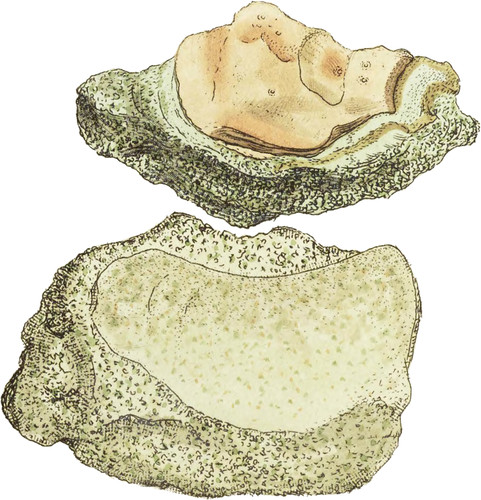 Enlarge
Enlarge
British Mineralogy
Sandy Talc
- Syn. Mulotto Stone of the Irish.
This is abundant in the neighbourhood of Belfast, and found under a stratum of Limestone. It is harder than the last, being sufficiently incorporated and indurated to be termed a stone, thus differing from the foregoing, although perhaps containing the same materials; viz. Sand and Lime, with, possibly, some Clay, besides Talc.
The upper figure represents a piece sent by my friend Mr. Templeton, of Belfast, which has the impression of an oyster without any remains of the shell, and that part which seemed to be the impression of the connecting cartilage of the oyster has the fracture of Carbonate of Lime. There are often, I presume, very curious shells found in this substance; I, however, have, as yet, only obtained some crushed and unintelligible fragments. The green Talc which spots this stone gives it the characteristic by which it is commonly recognised, and I have often known stones with other greenish substances confounded with it.
The lower specimen was sent, with others, by Dr. Scott. All had more or less of impressions on them, and mostly of the same animal or shell, something like a curved oyster*, which is very common where sand and chlorite are found together.
The formation of these rocks or sandv marles, &c. seems to be nearly of the same date wherever they are found, although sometimes near the surface of the earth, and sometimes covered with Limestone-rock at various depths.
- * Of these I have some curious small specimens sent by my friend Mr. Wood, from near Wingham in Kent, about ten miles from the sea. There were no vestiges of Chlorite about them.

